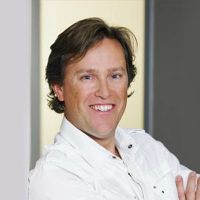Recommended specialists
Article overview
Orthodontics - Further information
How is a diagnosis for a jaw disorder carried out?
Before the orthodontist treats the jaw or corrects tooth position, a full diagnosis is necessary. First of all, the specialist dentist checks tooth position in the patient's jaws. It is also often necessary to take an X-ray if the treating dentist has not already done this. Diagnosis finishes with making an impression of the teeth so that an individual jaw model can be made. Using this model is the only way for the orthodontist to recognize which teeth need repositioning in the patient's jaws.
The different treatment techniques in orthodontics
Primarily, the orthodontist uses braces to correct tooth or jaw malposition. For this, several options available: if the orthodontist opts for a fixed brace he will fix this in position on the teeth. If the brace can be taken out, then the patient still needs to wear it every day but only for a certain period. Naturally, the orthodontist explains to his patients how to clean teeth and brace properly.
In the procedure known as two-phase treatment, both methods are combined together. So that the brace sits perfectly, the orthodontist will adapt it precisely to the patient's bite. Even so, this single treatment is not all that is needed. This is because the brace must be readjusted by the orthodontist at regular intervals so that the teeth eventually adopt the correct position. This process can last for several years and is also still possible for adult patients.
The only difference between the treatment of adolescents and adults is in the type of brace. Different types are necessary because the bite of adolescents - unlike that of adults - is still growing, which is why different types of braces are also needed here.
Where do orthodontists work?
Patients don't consult orthodontists on their own initiative but instead are referred by their dentist. Most orthodontists work independently in their own surgeries or work in a community practice with colleagues. The reason - the instruments and devices which orthodontists work with are relatively expensive so that several dentists often band together to share the costs. Other fields of activity are dental clinics and research where, for example, orthodontists work on the development of babies' pacifiers adapted to the jaw.
What training does an orthodontist need?
Firstly, the dentist must complete a course of study in dentistry which lasts 11 semesters. As soon as the course is finished and he has passed the final examination, he will be given his license to practice dentistry. Because he ultimately intends qualify as an orthodontist he will then spend a year working in general dentistry before continuing to further training in orthodontics. This lasts three years.
During the further training the prospective specialist dentists usually work in a clinic or a dentistry practice where a doctor authorized to deliver further training teaches theoretical and practical knowledge. Finally, the prospective specialist dentists present themselves to the examination board of the Dental Association for examination. The examination can be repeated no more than twice if the dentist does not pass it the first time.
Further training options for orthodontists
A variety of different further training options are available to orthodontists. For example, in a four-year course of study, they can have further training in oral surgery. As soon as they have finished this, they can also operate surgically in the area around the teeth.
Another option is further training in oral, jaw and facial surgery. Even so, it is necessary for an orthodontist opting for this pathway to complete an additional study in human medicine.
Also, there are numerous further training courses which enable the orthodontist to gain further technical knowledge in his specialist field. For example, he should in any case always keep up to date with new ways of correcting bite malpositions. Furthermore, other courses that are provided include ones addressing esthetic splint therapy or orthodontics for milk teeth.
Medical spectrum
Diseases
References
Quellen:
Deutsche Gesellschaft für Funktionsdiagnostik und -therapie in der Zahn-, Mund- und Kieferheilkunde et al. (2019) Diagnostik und Behandlung von Bruxismus. S3-Leitlinie. AWMF-Register-Nr.: 083-027. https://www.awmf.org/uploads/tx_szleitlinien/083-027l_S3_Bruxismus-Diagnostik-Behandlung_2019-06.pdf
Deutsche Gesellschaft für Kieferorthopädie (o.J.) Die Kieferorthopädische Weiterbildung. https://www.dgkfo-vorstand.de/information/weiterbildung.html
Deutsche Gesellschaft für Zahn-, Mund- und Kieferheilkunde (o.J.) Festsitzende oder herausnehmbare kieferorthopädische Apparatur? Patienteninformation. https://www.zahnmedizinische-patienteninformationen.de/documents/10157/1129556/268572_1567435_Festsitzende+oder+herausnehmbare+kieferorthop%C3%A4dische+Apparatur.pdf/0be665ef-ea23-4f80-8d04-898af49e53d3?version=2.0&previewFileIndex=0
Deutsche Gesellschaft für Zahn-, Mund- und Kieferheilkunde (o.J.) Zahnentfernung im Rahmen einer kieferorthopädischen Behandlung. Patienteninformation. https://www.zahnmedizinische-patienteninformationen.de/documents/10157/1129556/268572_1567379_Zahnentfernung+im+Rahmen+einer+kieferorthop%C3%A4dischen+Behandlung.pdf/4df37358-02e7-4f2d-a614-96c10e2b33e4?version=2.0&previewFileIndex=0
Gemeinsamer Bundesausschuss (2003) Richtlinien des Bundesausschusses der Zahnärzte und Krankenkassen für die kieferorthopädische Behandlung. https://www.g-ba.de/downloads/62-492-8/RL-Kieferorthopaedie.pdf






